Beneficial Bugs
Gardening Information
Beneficial Bugs in the Home Garden
By Katie Mulliken, former Red Butte Garden horticulturist
Crystal Kim, Red Butte Garden Horticulture Program Coordinator
Zach Schumm, Arthropod Diagnostician and Urban IPM Associate, Utah State University Extension
Gardens are home to many beneficial insects and arthropods. Being able to identify these helpful residents can help you improve and maintain the health of your garden’s ecosystem. As a gardener, it’s easy to focus on common pests, such as aphids, squash bugs, spider mites, caterpillars, and so on. According to the publication Beneficial Insects of Utah (Utah State University Extension), only about 1% of all insect and mite species are potentially harmful, and heightened concern for pest infestations often leads to the misidentification of beneficial insects.
Some well-known garden superstars are lady beetles, lacewings and praying mantids, but there are others of equal merit that go unnoticed or mislabeled. Some are predators of garden pests while other parasitize pests by laying their eggs on or in them, which then feed on the host as they grow and develop. We often recognize only a single life stage of a beneficial insect, like the adult lady beetle, but knowing what the larval stage looks like is important, too. Understanding how to identify and encourage beneficial organisms can save time, money and labor, not to mention reduced insecticide use. Beneficial organisms are an important tool in a good integrated pest management program, where the goal is to combat garden pests using many different techniques that save time and money while preserving environmental quality, rather than automatically defaulting to use of pesticides.
Employing good gardening practices will attract and support populations of beneficial insects. One of these practices is planting a wide variety of plants that provide pollen and nectar throughout the growing season, as an alternate food source for these natural enemies. Another good practice is reducing the use of insecticides, especially those that are broad spectrum, to prevent harming beneficial insects along with pests. It is preferable to encourage natural enemies that are native and already present in the landscape, rather than purchase and release insects that have been commercially produced.
While many of the following insects and arthropods also serve as pollinators, we’re mainly focused here on their value as natural enemies. If you’re interested in more information about pollinators, some good resources can be found here.
PREDATORS
LADY BEETLES
Family Coccinellidae
Size: Adult 4-7 mm/ Larva 1-9 mm
Perhaps the most well-known garden hero is the lady beetle (lady bug, ladybird beetle). Active from early spring to late fall, lady beetles are an asset for multi-season pest control. They feed primarily on aphids but also enjoy leafhoppers, mites, scale insects, thrips and whiteflies. The larvae have a more voracious appetite than the adults. With over 400 species in North America, size and coloration vary widely, from cream and spotless to black with red spots. Markings on larvae are species-specific. Eggs are typically orange-yellow.
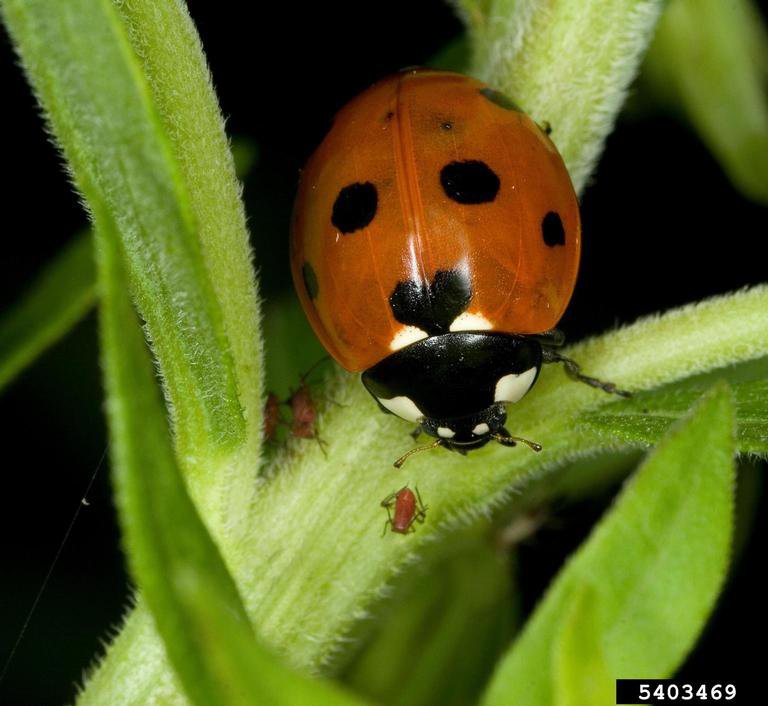
Seven spotted lady beetle (Coccinella septempunctata) David Cappaert, Bugwood.org
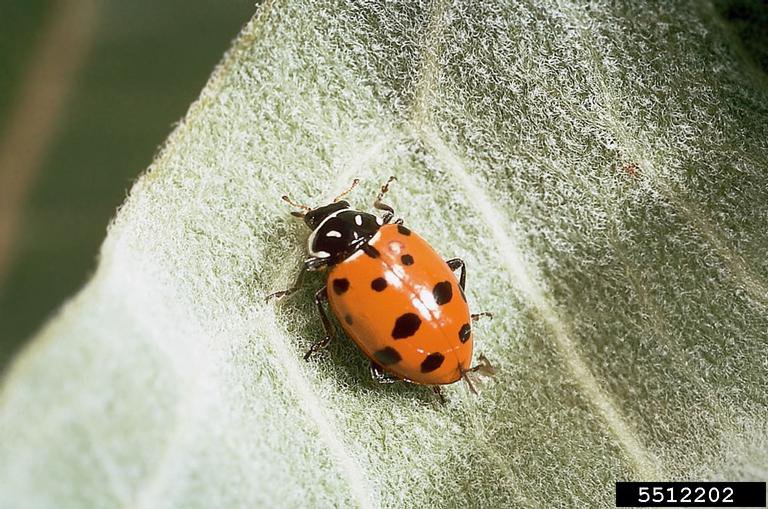
Convergent lady beetle (Hippodamia convergens) Kansas Department of Agriculture, Bugwood.org
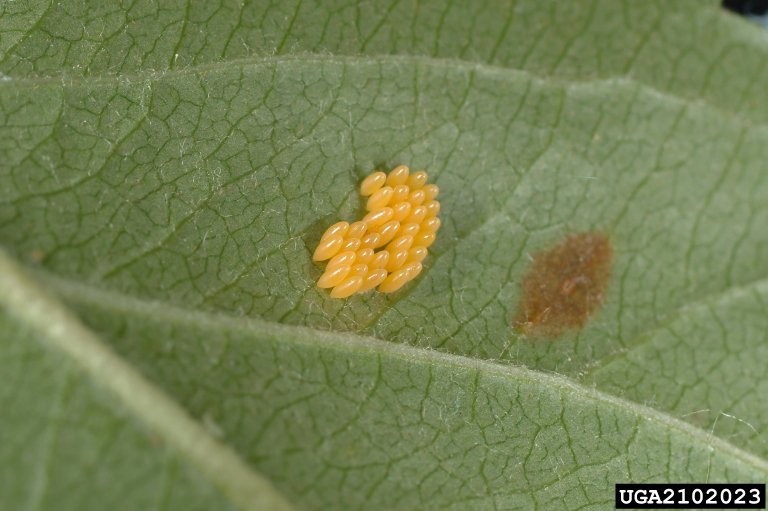
Convergent lady beetle eggs (Hippodamia convergens) Joseph Berger, Bugwood.org
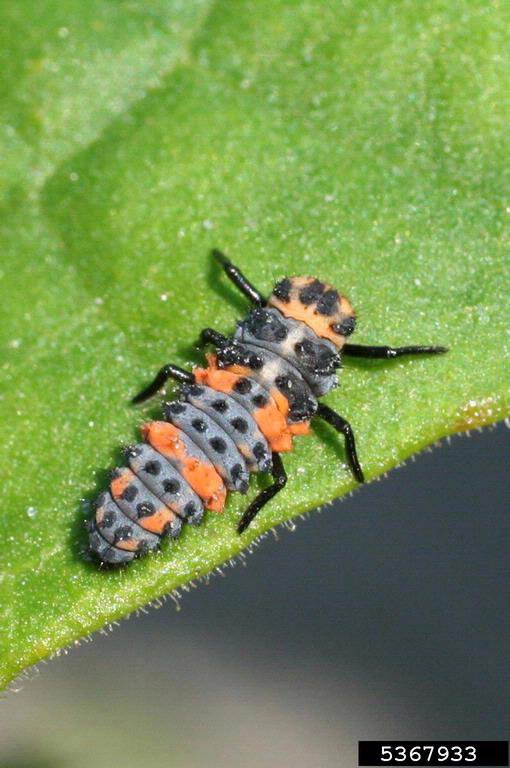
Seven spotted lady beetle larva (Coccinella septempunctata) Russ Ottens, University of Georgia, Bugwood.org
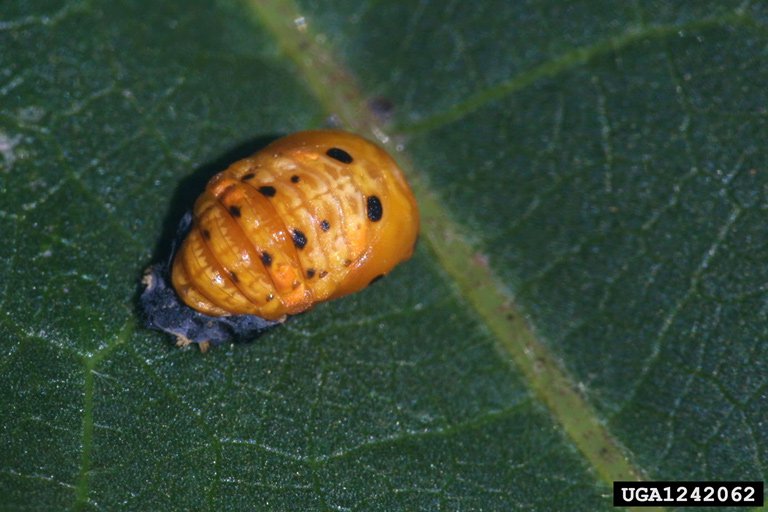
Convergent lady beetle pupa (Hippodamia convergens) Russ Ottens, University of Georgia, Bugwood.org
MANTIDS (PRAYING MANTID, PRAYING MANTIS)
Family Mantidae
Size: 1-7 cm
The mantid is another horticultural icon. The two species commonly seen in Utah are the Chinese mantid (Tenodera sinensis) and the European mantis (Mantis religiosa). The Chinese mantid is the largest species found in North American, with adults reaching up to five inches long. Colors vary from brown to green. It is the most common due to releases from commercial sources. The European mantis is shorter, reaching a length of up to four inches, and is usually entirely green. Nymphs of both species are similar in appearance to the adults, only smaller. The Arizona bordered mantis (Stagmomantis limbata) is native to Utah. It has a distinct light yellow border around the edge of its wings. All mantids feed on any living prey they can grasp and manage, including beneficial insects, other mantids and even small vertebrates, such as small birds.
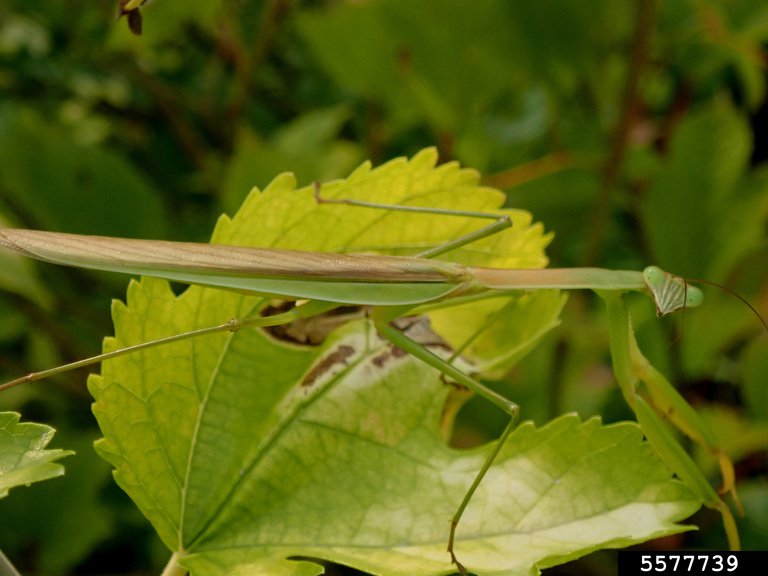
Chinese mantid (Tenodera sinensis) Whitney Cranshaw, Colorado State University, Bugwood.org
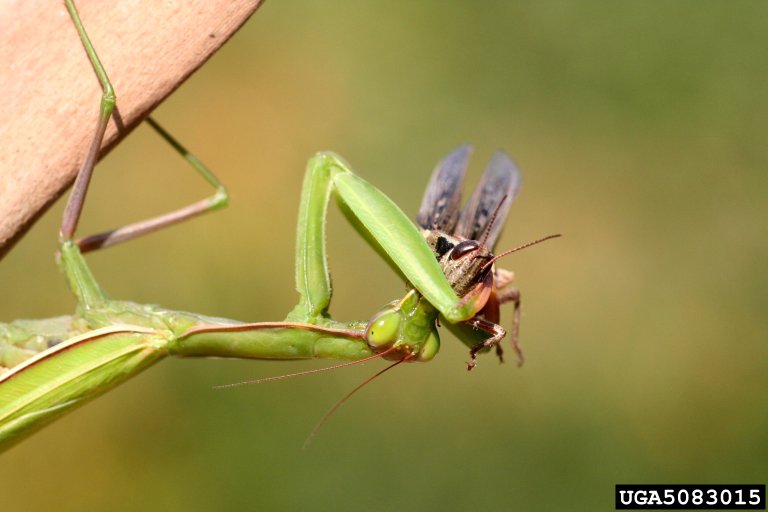
European mantid (Mantis religiosa) Whitney Cranshaw, Colorado State University, Bugwood.org
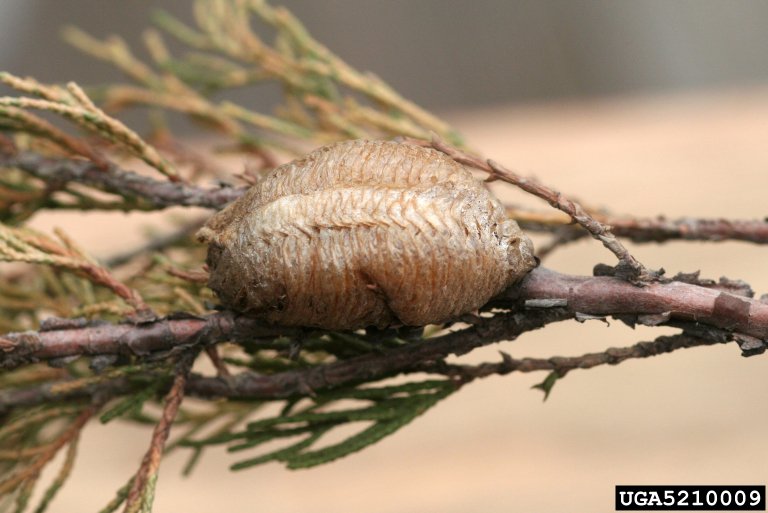
European mantid egg sac (Mantis religiosa) Whitney Cranshaw, Colorado State University, Bugwood.org
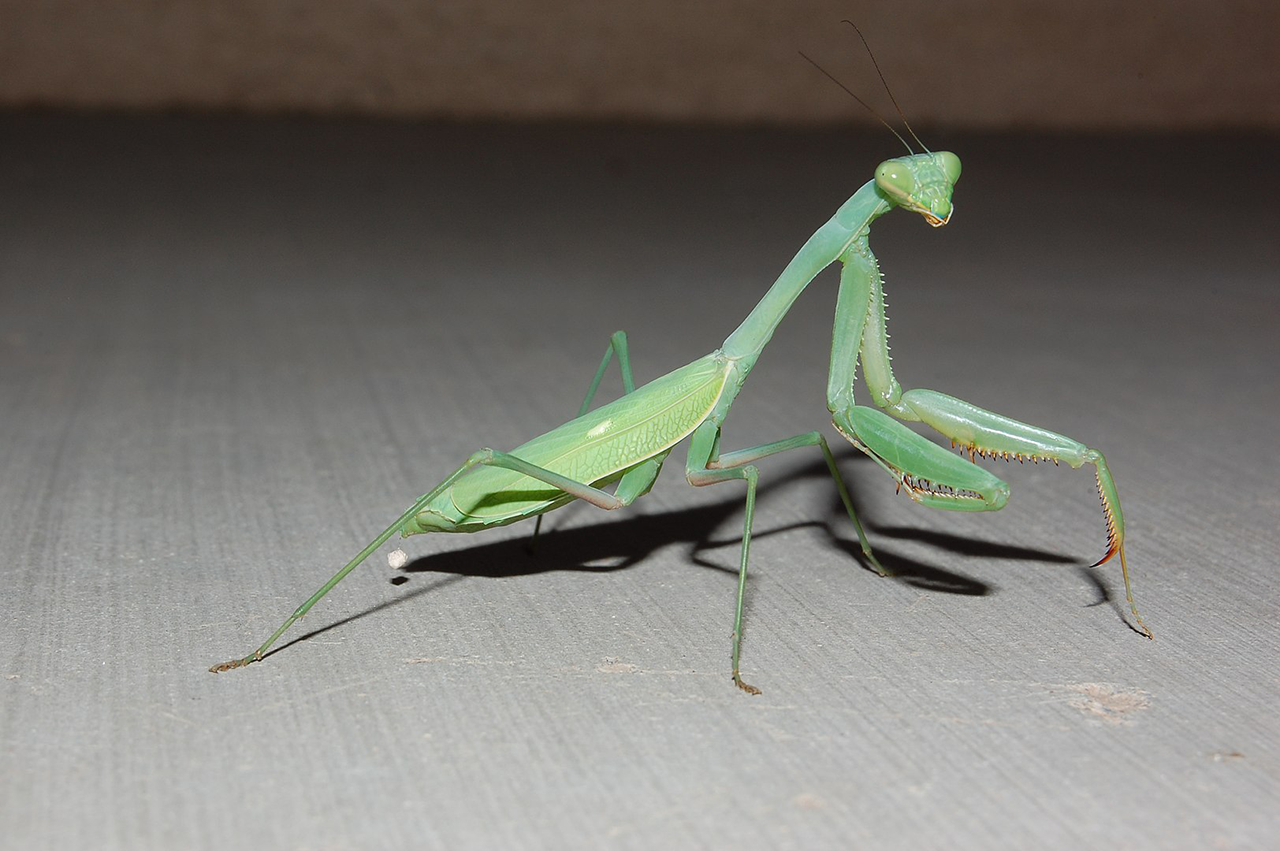
Arizona bordered mantid (Stagmomantis limbata) Wikimedia Commons: Skoch3 - Own work, CC BY-SA 3.0, https://commons.wikimedia.org/w/index.php?curid=4653405
GROUND BEETLE
Family Carabidae
Size: 3-12 mm
Because of their nocturnal nature, ground beetles aren’t often seen in the garden, but they are hard at work regulating pest populations. They enjoy a varied diet of grasshoppers, slugs, aphids, caterpillars, cutworms, ants, other beetles, small larvae, and insect eggs. There are thousands of ground beetle species. Both larvae and adults eat their body weight in prey each day. Larvae often kill more prey than they can eat, making them an asset in reducing populations of soil-dwelling pests.

Fierce Ground Beetle (Pasimachus depressus) Whitney Cranshaw, Colorado State University, Bugwood.com
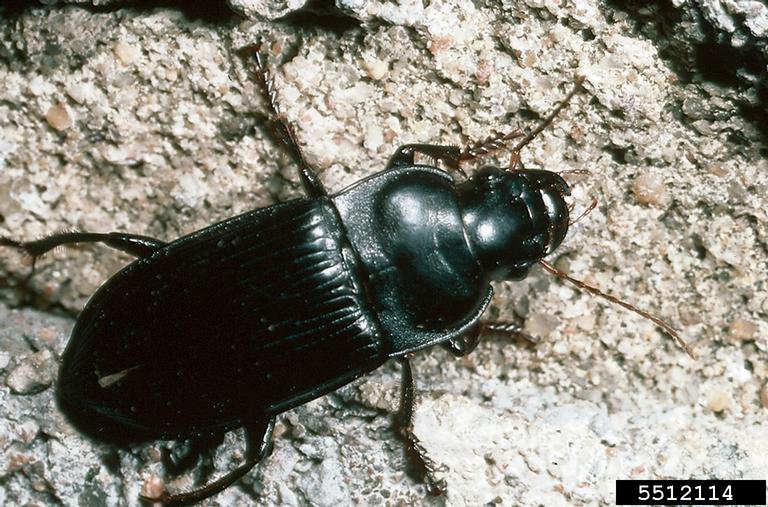
Murky ground beetle (Harpalus caliginosus) Kansas Department of Agriculture, Bugwood.org
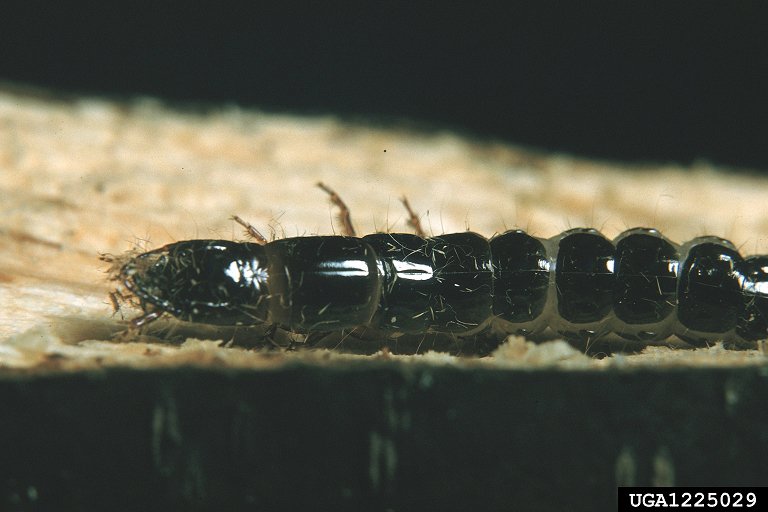
Murky ground beetle larva (Harpalus caliginosus) Edward L. Manigault, Clemson University Donated Collection, Bugwood.org
PREDATORY STINK BUGS
Family Pentatomidae
Utah is home to many species of predatory stink bugs that eat caterpillars and beetle larvae. Predatory stink bugs can often be identified by their thickened piercing-sucking mouthpart (proboscis). Some are distinct in their appearance while others could be mistaken for pests.
Predatory stink bugs can be confused with the brown marmorated stink bug, an invasive pest that can cause major devastation to food crops. Marmorated stink bugs are mottled dark brown, and have distinct white bands on the antenna, which are not present on other brown-colored stink bugs found in Utah. They are typically 17 mm long.
Podisus stink bug (Podisus placidus): Light brown with dark brown mottling. Can be mistaken for certain non-predatory stink bugs. Size: 9-11 mm
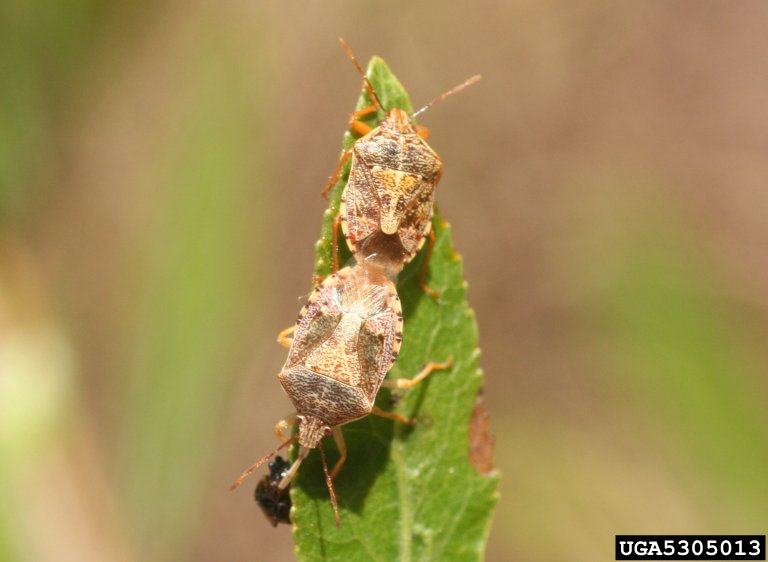
Podisus stink bug (Podisus placidus) Whitney Cranshaw, Colorado State University, Bugwood.org
Spined soldier bug (Podisus maculiventris): Brown with creamy underbelly and often have distinct pointed shoulders (the pronotum). Size: 8-13 mm
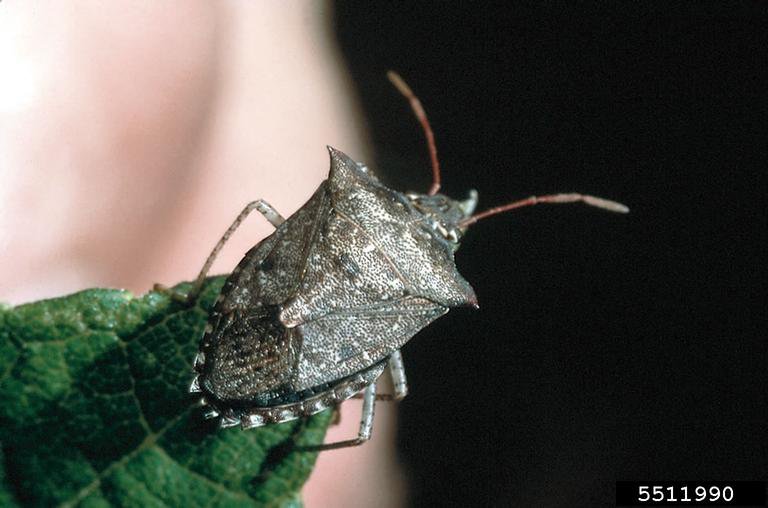
Spined soldier bug (Podisus maculiventris) Kansas Department of Agriculture, Bugwood.org
Two-spotted stink bug (Perillus bioculatus): Two color forms are possible, red and white. Has a keyhole shape on its scutellum (posterior portion of thorax that covers part of the wings) and two black markings behind the head on the front part of the thorax. Size: 8-11 mm
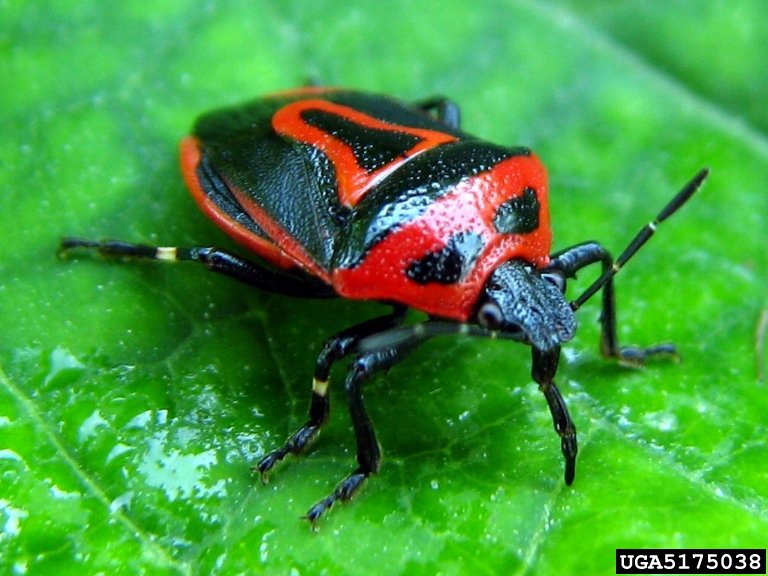
Two-spotted stink bug (Perillus bioculatus) Kevin D. Arvin, Bugwood.org
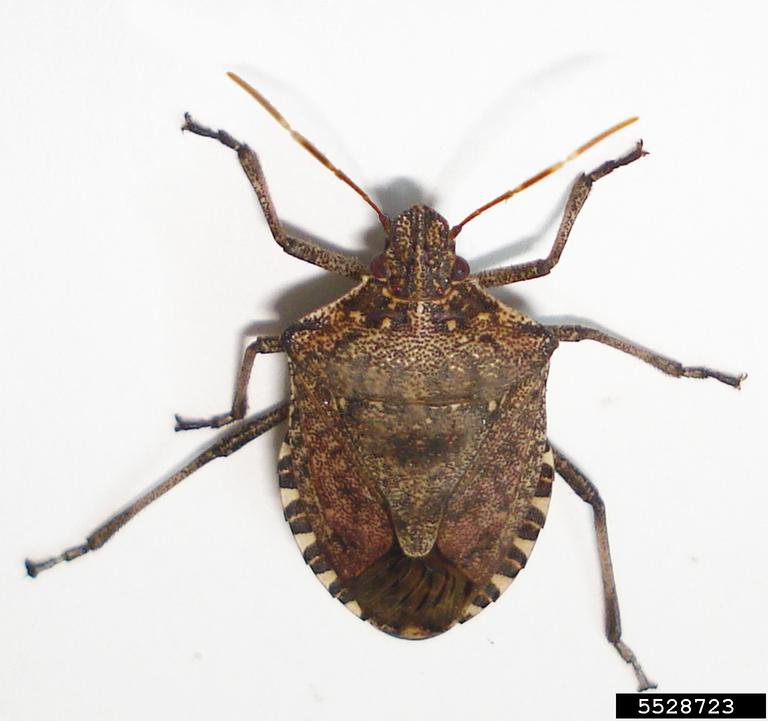
Brown marmorated stink bug (Halyomorpha halys) Mohammed El Damir, Bugwood.org
SOFT-WINGED FLOWER BEETLES
Family Melyridae
Size: 2-7 mm
Preying on aphids, caterpillars, lygus bug nymphs and whiteflies, soft-winged flower beetles provide early to mid-season pest control. Their pinkish eggs are typically laid in soil. They have black to green iridescent bodies and stripes or markings of red or orange. They are typically found in gardens with large stands of flowers and grasses, and not on vegetable plants.
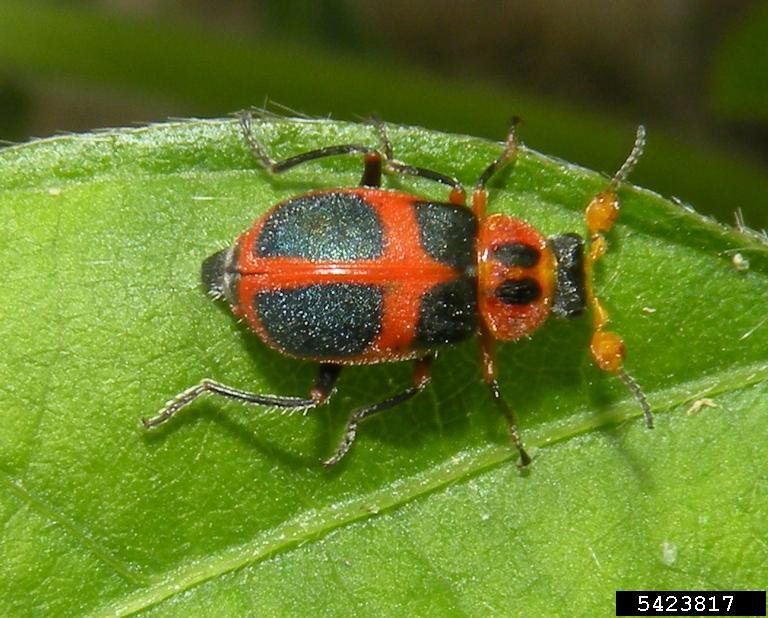
Collops beetle (Collops sp.) Jessica Louque, Smithers Viscient, Bugwood.org
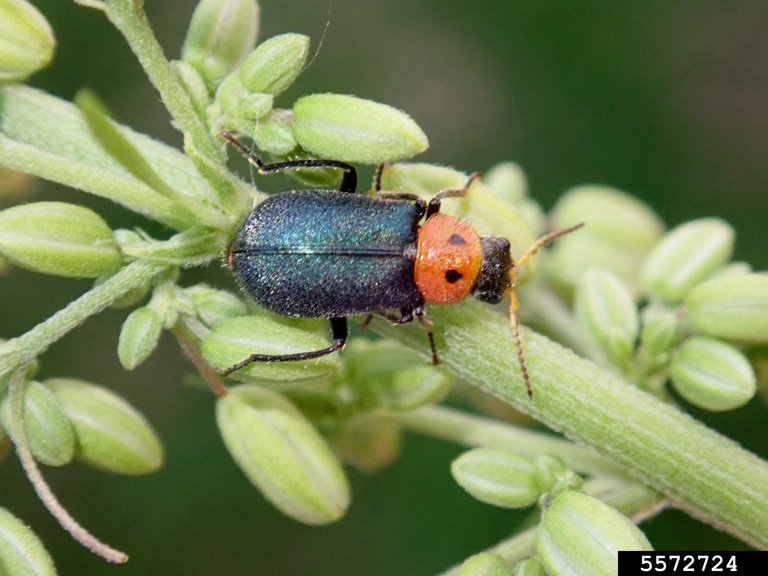
Two-spotted collops beetle (Collops bipunctatus) Whitney Cranshaw, Colorado State University, Bugwood.org
LACEWINGS
Families Chrysopidae and Hemerobiidae
Size: Adult 2-25 mm/ Larva 1-10 mm
Lacewings have thin bodies with delicate, transparent wings. They are typically green but may also be brown. The larvae are the predatory life stage and are often called “aphid lions” due to their voracious appetite for aphids. They become active in early spring. Eggs are small, white ovals suspended from leaves or stems on small stalks or threads.
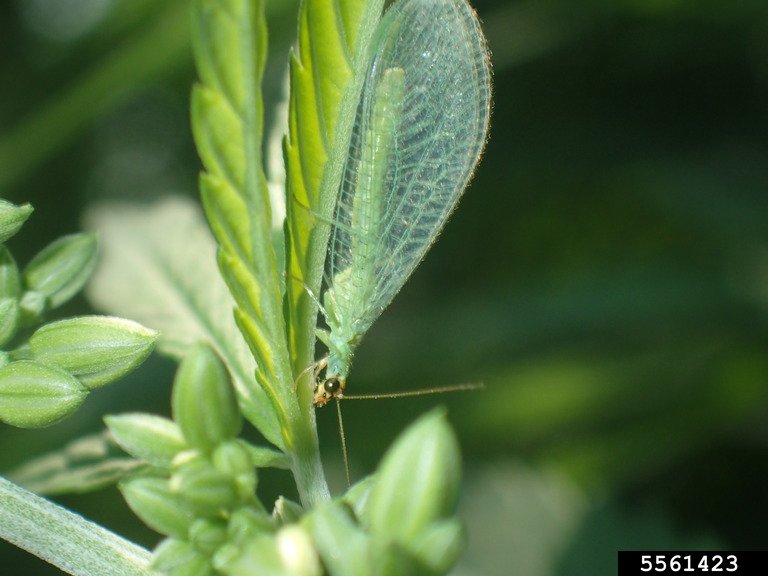
Common green lacewing (Chrysoperla plorabunda) Whitney Cranshaw, Colorado State University, Bugwood.org
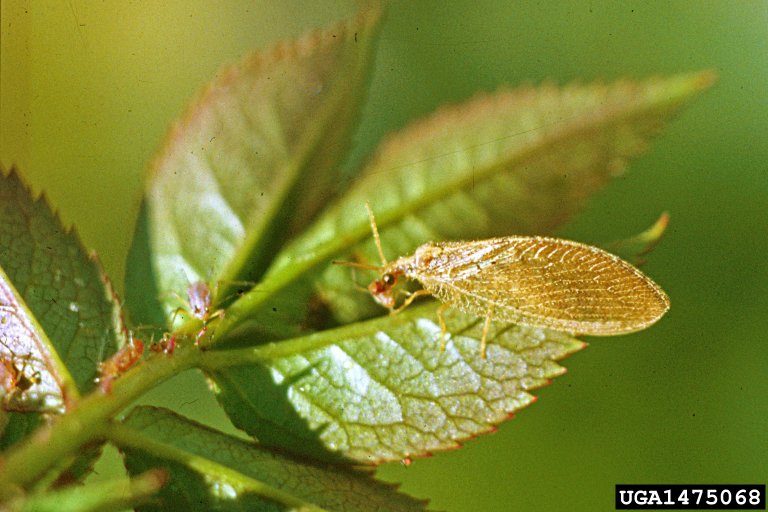
Brown lacewing (Hemerobius sp.) Whitney Cranshaw, Colorado State University, Bugwood.org

Green lacewing larva (Chrysoperla rufilabris) Whitney Cranshaw, Colorado State University, Bugwood.org
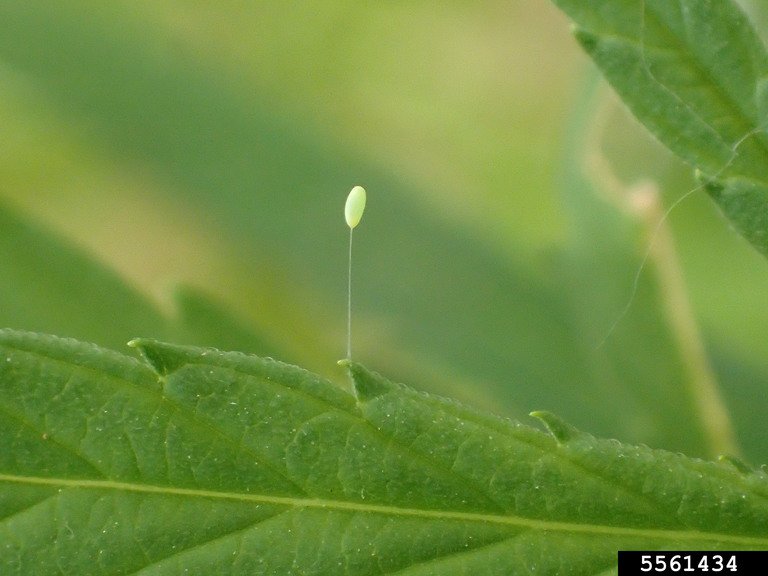
Common green lacewing egg (Chrysoperla plorabunda) Whitney Cranshaw, Colorado State University, Bugwood.org
MINUTE PIRATE BUG
Family Anthocoridae
Size: 3-6 mm
These very small (“minute”) insects reproduce rapidly, making them an excellent control against spider mites and thrips, as well as aphids and insect eggs. They are known to consume up to 30 insects a day. Adults of most species have a black and white pattern.
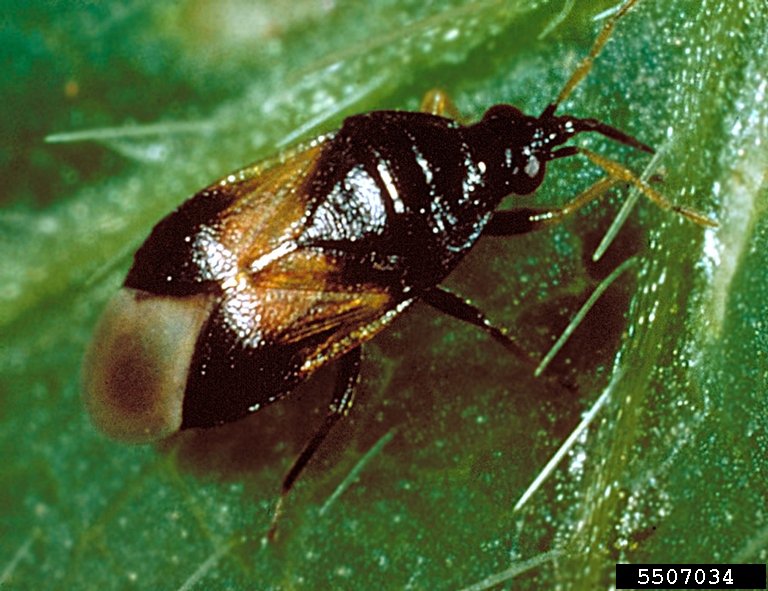
Minute pirate bug, aka Insidious flower bug (Orius insidious) Phil Sloderbeck, Kansas State University, Bugwood.org
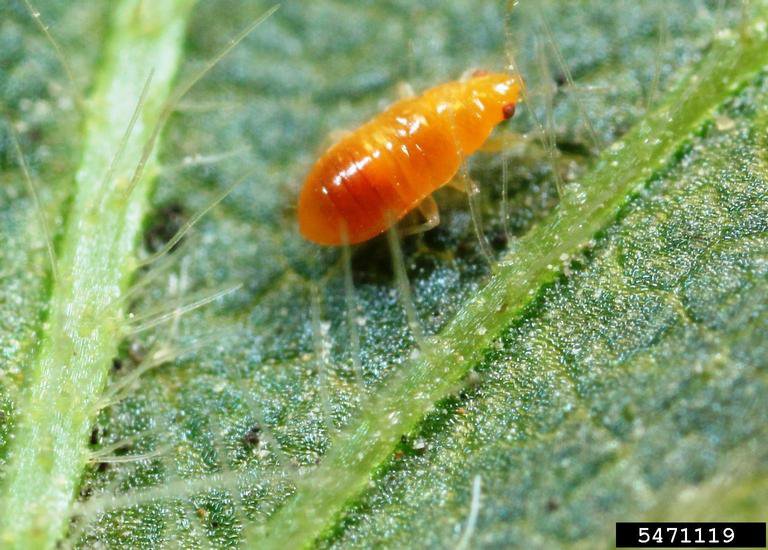
Minute pirate bug nymph (Orius sp.) Adam Sisson, Iowa State University, Bugwood.org
PAPER WASP
Western paper wasp (Mischocyttarus flavitarsis), European paper wasp (Polistes dominula)
Size: 15-25 mm
Paper wasps are docile towards humans and will not attack unless provoked. Most stings are due to inadvertent nest disturbances. The western paper wasp is more likely to “ram” into a perceived threat before resorting to a sting. It favors soft-bodied, crop-damaging insects, mainly caterpillars, and may also feed on nectar. The European paper wasp, which has a more varied diet, has become naturalized and is quickly becoming the most abundant paper wasp species locally. Paper wasps are slimmer than yellowjackets and hornets, and their legs dangle as they fly rather than being held against their bodies. Their nests are open-celled and can be found in any nice, protected space, such as under eaves or mailboxes, in outdoor light fixtures or pipes, etc. Paper wasps are unlikely to show up uninvited to your picnic like yellowjackets are known to do.
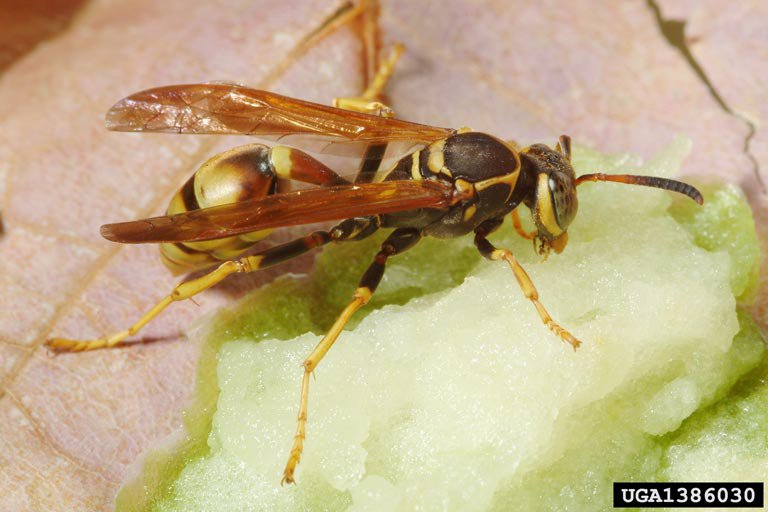
Western paper wasp (Mischocyttarus flavitarsis) Joseph Berger, Bugwood.org

European paper wasp (Polistes dominula) Whitney Cranshaw, Colorado State University, Bugwood.org
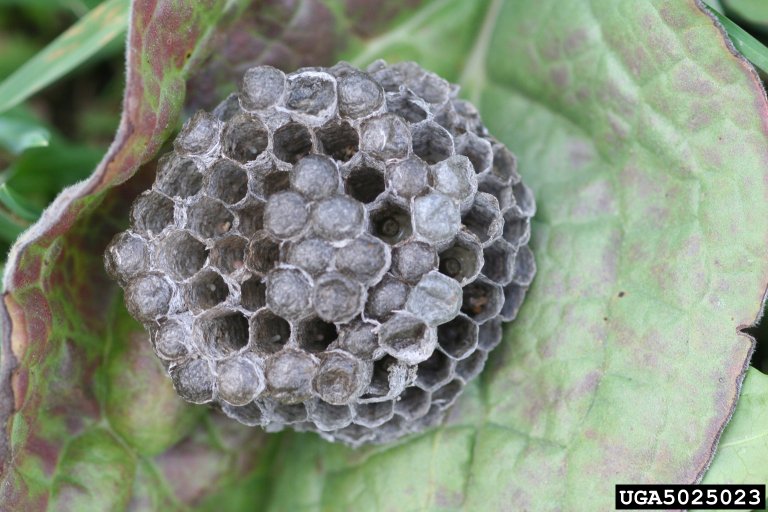
Western paper wasp nest (Mischocyttarus flavitarsis) Whitney Cranshaw, Colorado State University, Bugwood.org
BALD-FACED AND OTHER AERIAL YELLOWJACKETS
Baldfaced hornet (Dolichovespula maculata)
Size: 25-40 mm
Aerial yellowjacket (Dolichovespula arenaria)
Size: 15-20 mm
Bald-faced and other aerial yellowjackets make large nests covered by a papery shell, often in trees or at the peak of overhangs and eaves. They pose less of a threat to humans due to the location of their nests, but will defend their nests if disturbed. They feed on living insets, pollen and nectar. Aerial yellowjackets are blackish brown with yellow markings on the face, legs and end of abdomen. Bald-faced hornets are the most common species in Utah. They have a distinct appearance – black bodies with white to cream bands on the legs, face and end of abdomen.
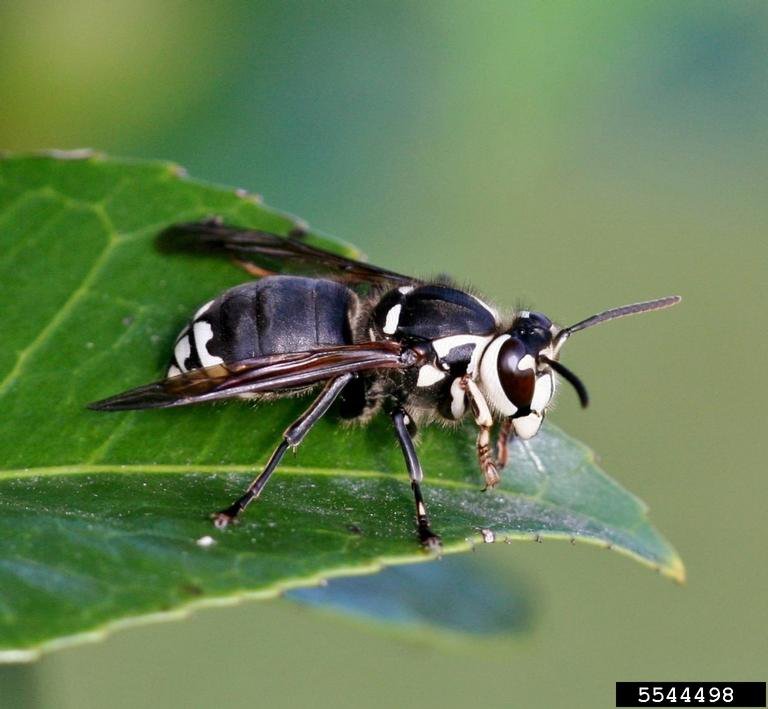
Bald-faced aerial yellowjacket (Dolichovespula maculata) Johnny N. Dell, Bugwood.org
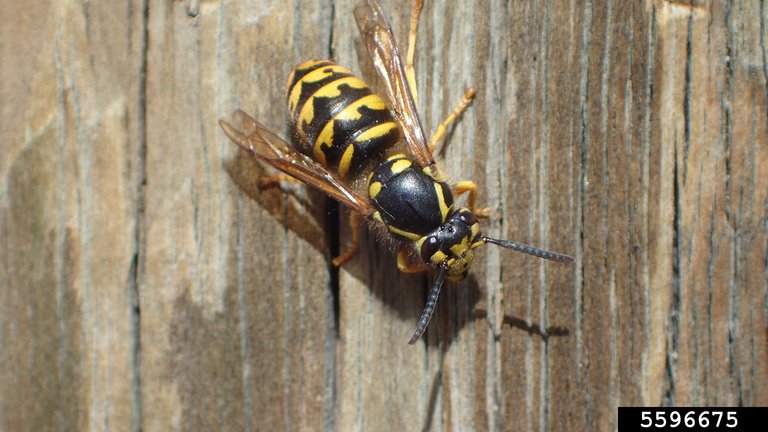
Aerial yellowjacket (Dolichovespula arenaria) Whitney Cranshaw, Colorado State University, Bugwood.org
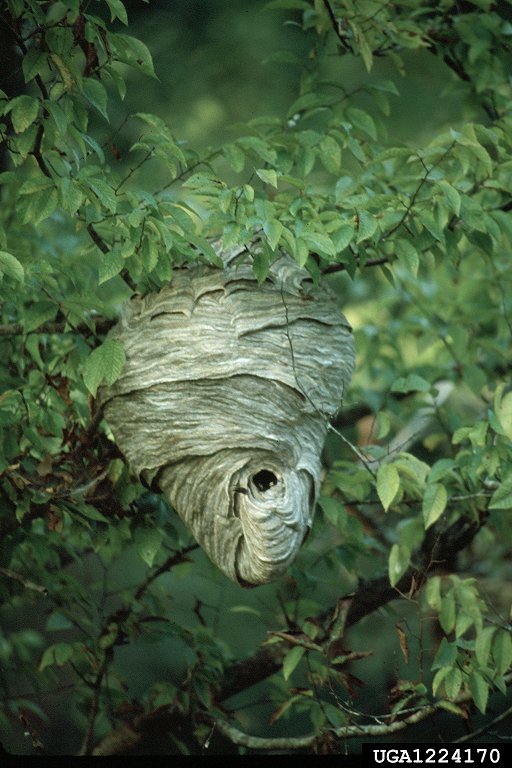
Bald-faced hornet nest (Dolichovespula maculata) Jerry A. Payne, USDA Agricultural Research Service, Bugwood.org
SYRPHID FLIES (HOVER FLIES)
Family Syrphidae
Size: Adult 4-24 mm/ Larva 1-13 mm
Syrphid flies are also known as hover flies due to their tendency to stay stationary (hover) temporarily while flying. Syrphid flies are great bee mimics as they often have similar coloration and patterns to many bee species. However, a close inspection reveals that they have only two wings, while bees have four. Adults are valuable pollinators, while the nocturnally active larvae are predatory, eating up to 400 insects during this life stage. Their preferred prey are aphids, leafhoppers, pear psylla, scale insects, spider mites and thrips. Eggs are commonly laid directly in aphid colonies, for a convenient meal after hatching.
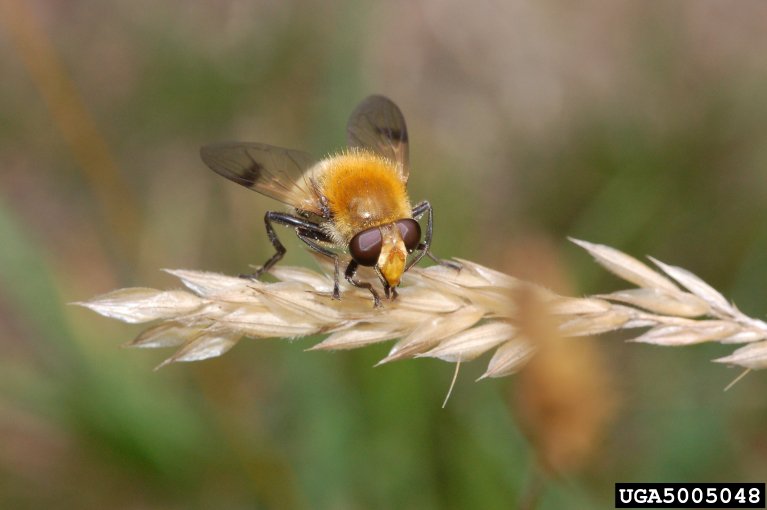
Syrphid fly (Sericomyia superbiens) Jeremy Lee, Bugwood.org
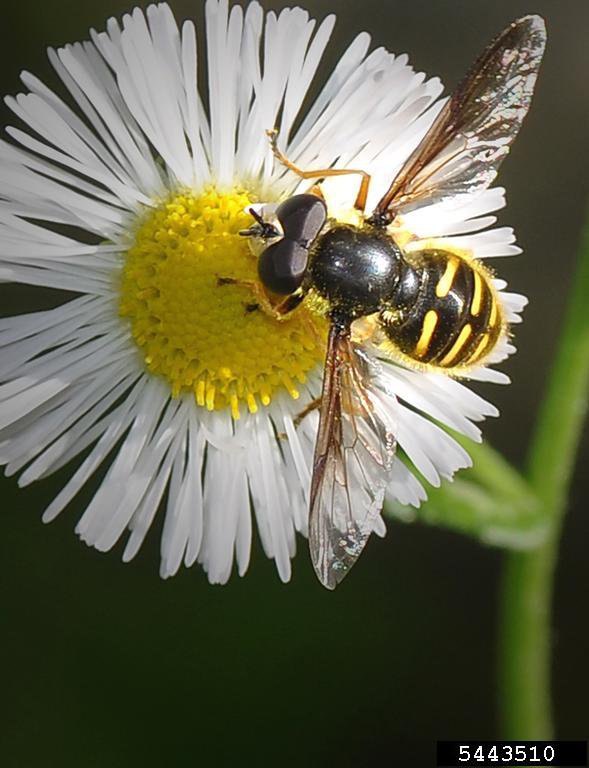
Syrphid fly (Sericomyia sp.) Jon Yuschock, Bugwood.org
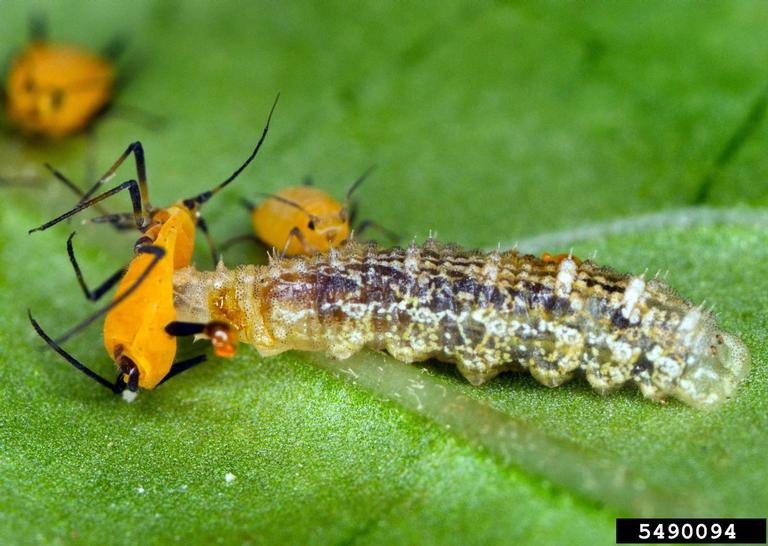
Syrphid fly larva, David Cappaert, Bugwood.org
APHID MIDGE
Aphidoletes spp.
Size: 2-3 mm
These tiny flies, which can be mistaken for mosquitos, are often missed due to their small size. A single larva can consume 80 aphids in its short lifetime, while the adults feed on nectar and honeydew.
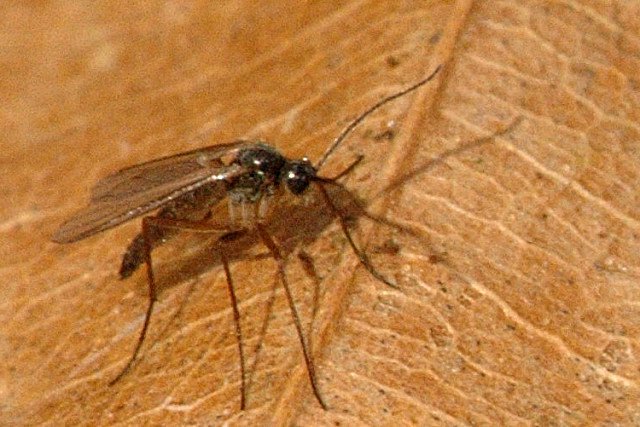
Aphid midge (Aphidoletes aphidimyza) Wikimedia Commons: James Lindsey, Ecology of Commanster, CC BY-SA 3.0, https://commons.wikimedia.org/w/index.php?curid=1967642
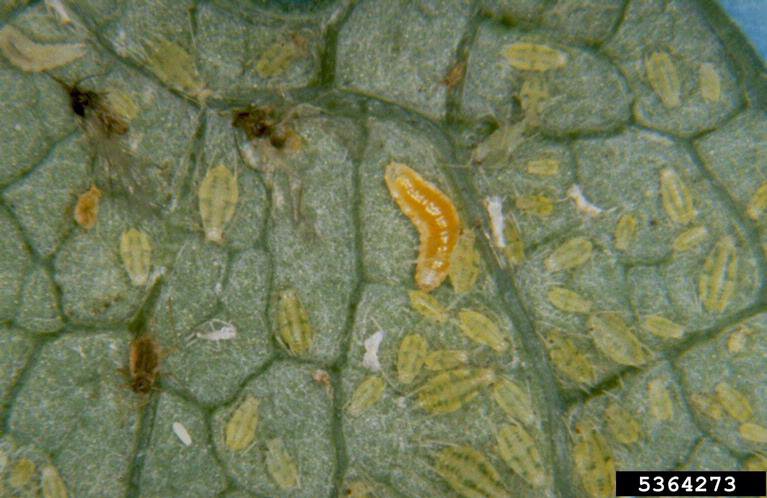
Aphid predatory midge (Aphidoletes aphidimyza) Whitney Cranshaw, Colorado State University, Bugwood.org
SPIDERS
Hundreds of spider species are found in Utah. These immensely beneficial arthropods (not insects) are a vital component of any garden ecosystem. Following are some of Utah’s most common garden spiders.
Orb-Weaving Spiders—Family Araneidae
Two common orb-weavers found in gardens are the banded garden spider and the cat-faced spider. Their webs can be seen on or between plants or near artificial light sources, where prey insects are found. Orb-weavers are easily identified by their webs which are concentric circles (circles within other circles) with straight segments heading outward from the center, like wheel spokes. Size: 2-30 mm
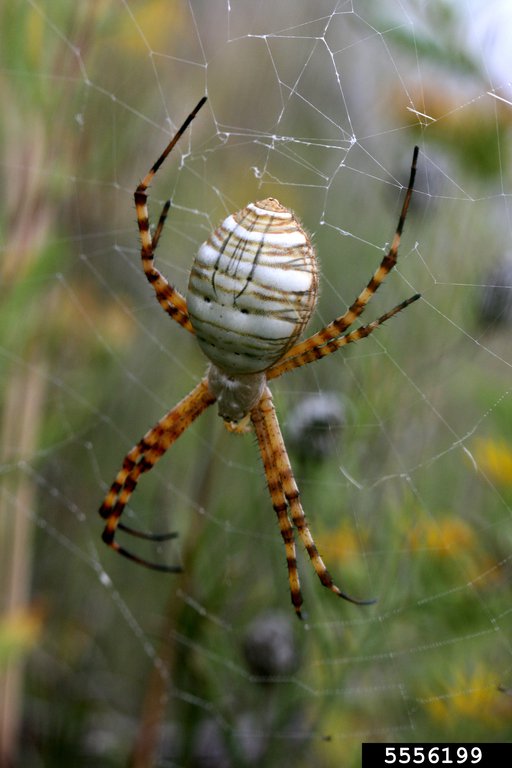
Banded garden spider (Argiope trifasciata) Whitney Cranshaw, Colorado State University, Bugwood.org
Funnel Spiders—Family Agelenidae
The webs of funnel weavers are usually funnel shaped and found in vegetation. They will often wait near the funnel opening for prey and will dart in if disturbed. They may be found inside homes in late summer or fall, but are generally transient in these spaces. They don’t typically build webs indoors and can easily be relocated to the garden. Size: 5-18 mm
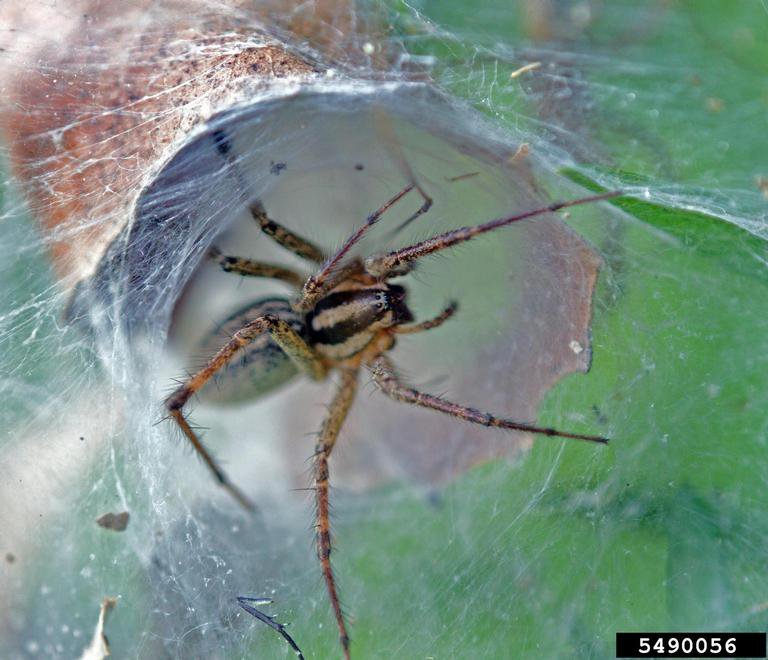
Funnel web spider (Agelenopsis sp.) David Cappaert, Bugwood.org
Jumping Spiders—Family Salticidae
Jumping spiders are active hunters during the day and catch prey by pouncing. Their large eyes provide the best vision of any land-dwelling arthropod. At night or during bad weather, they can be found hiding in small web retreats. They prey largely on pest insects and are helpful both inside and outside the home. Size: 1-22 mm
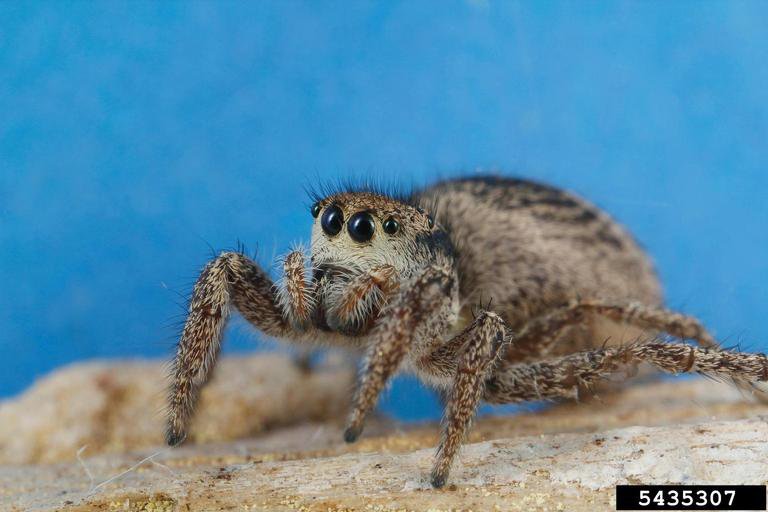
Jumping spider (Sitticus sp.) Joseph Berger, Bugwood.org
Woodlouse Spiders—Family Dysderidae
Woodlouse spiders are particularly helpful in controlling pillbugs (isopods), which can damage foliage and roots if populations are high enough. Their enlarged chelicerae, the structure the fangs are attached to, make them seem far more menacing than they are. Size: 9-15 mm

Woodlouse spider (Dysdera crocata) Joseph Berger, Bugwood.org
Wolf Spiders—Family Lycosidae
Often mistaken for funnel weavers, wolf spiders are ground hunters. They seldom wander indoors and are considered an important part of the garden ecosystem. Wolf spiders can be distinguished from funnel weavers and fishing spiders by a pair of eyes that are far up on the cephalothorax (the segment that legs are attached to). Other similar-looking spiders have eyes that predominantly face forward. Size: 3-35 mm
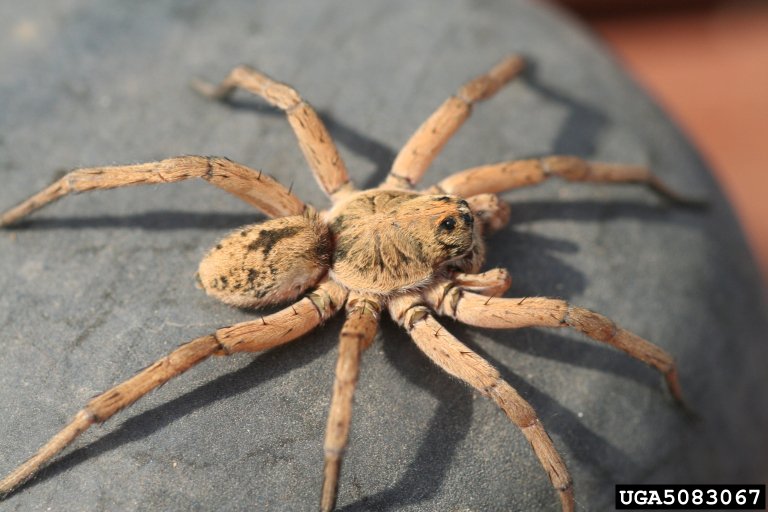
Wolf Spider (Hogna permunda) Whitney Cranshaw, Colorado State University, Bugwood.org
Ground Spiders—Family Gnaphosidae
These nocturnal hunters are great garden allies that mostly reside beneath rocks, leaf litter and other decomposing material during the day. Because there are many similar-looking species, magnification is often required to identify them accurately. Parson spider is a common species with a distinctive appearance of black or brown coloration with white markings on the cephalothorax and abdomen. Size: 8-15 mm

Western parson spider (Herpyllus propinquus) By lostinfog - Flickr: Western Parson Spider, CC BY-SA 2.0, https://commons.wikimedia.org/w/index.php?curid=23245784
PARASITOIDS
Many wasps, flies, and other insects parasitize other insects. Adult parasitoids are free living; the immature stage is the parasitic stage. The adult female lays her eggs in or on a host species. Eggs can be laid on adult, immature, or even eggs of the host, depending on the species. After the egg hatches, the larva feeds on the host, ultimately resulting in the host’s death. Some immature parasitoids consume their host from the inside, and so are not visible until they emerge to pupate or directly as adults. Parasitoids are great garden allies as their hosts are often insect pests.
TACHINID FLY
Family Tachinidae
Size: 3-14 mm
Tachinids are a large and important family of parasitic flies. The female typically lays an egg on the body of a host, usually near the head, and the larva develops inside the host. Hosts include caterpillars, beetles, true bugs, earwigs, and grasshoppers. These small, bristly flies are somewhat similar to house flies in appearance.
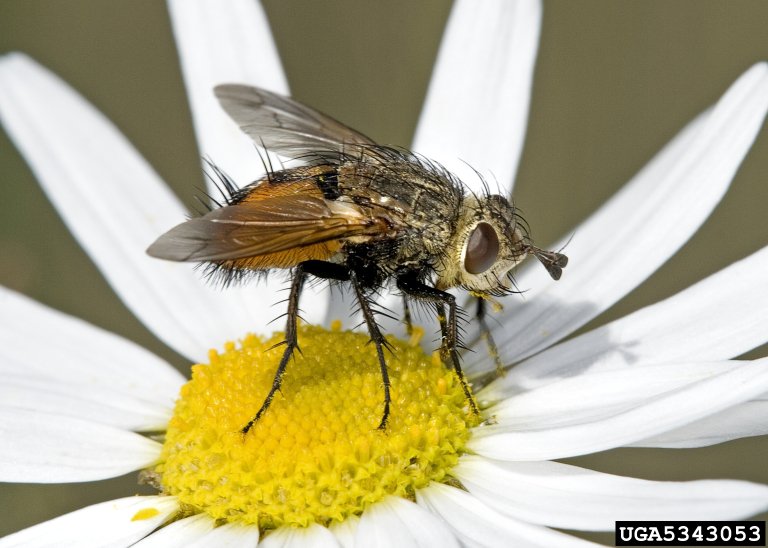
Tachinid fly, David Cappaert, Bugwood.org
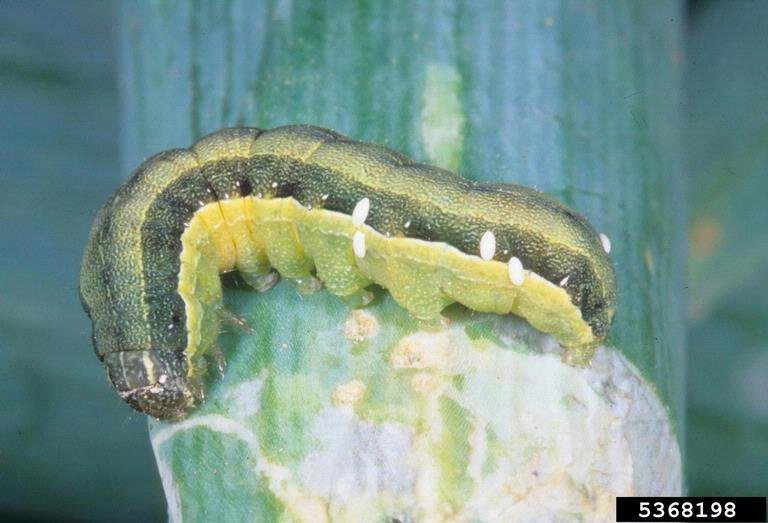
Tachinid fly eggs on caterpillar, Merle Shepard, Gerald R. Carner, and P.A.C Ooi, Insects and their Natural Enemies Associated with Vegetables and Soybean in southeast Asia, Bugwood.org
PARASITOID WASPS
Braconidae family and Chalcidoidea superfamily
Size: 1-18 mm
Ichneumonidae family
Size: 3-50 mm
With an estimated 650,000 species worldwide, parasitoid wasps are the largest and most impactful group of parasitoid insects. It is difficult to observe individuals of many wasp species due to their size—some are as small as one millimeter or less. On the other end of the size spectrum, the giant ichneumon wasp may be 3 inches long. Its long, tail-like ovipositor (tube-like organ used for laying eggs) that is often mistaken for a large stinger.
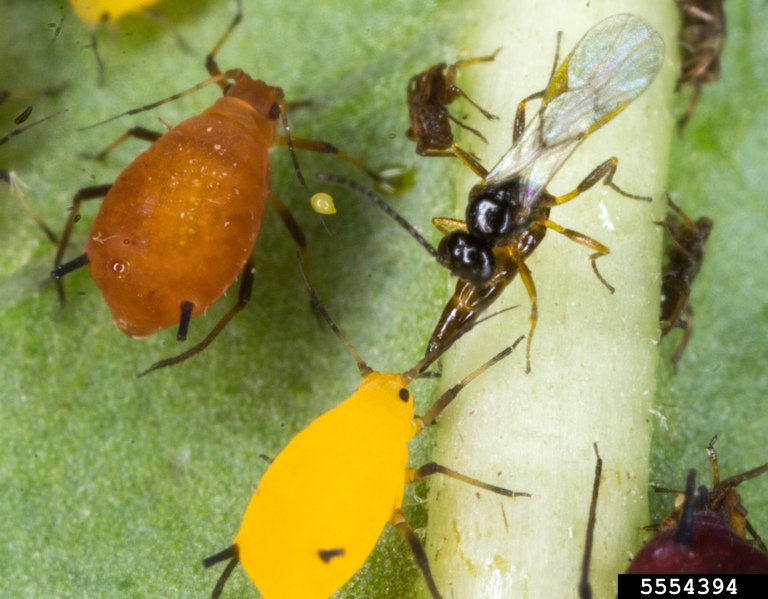
Braconid wasp with aphids (Lysiphlebus testaceipes) David Cappaert, Bugwood.org
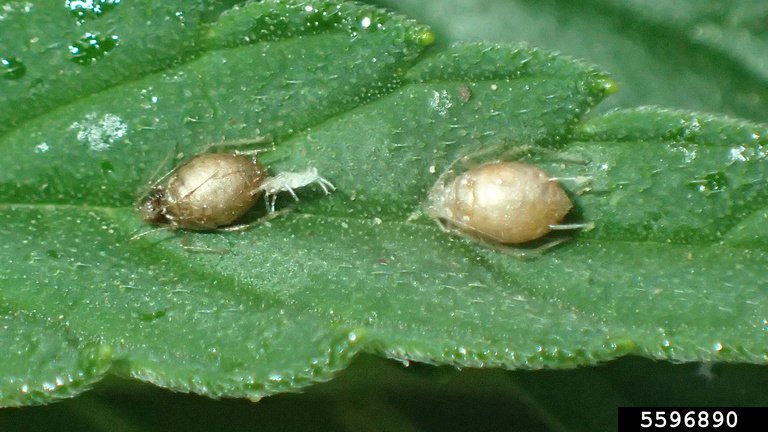
Aphid “mummy” hosts of braconid wasp (Aphidius ervi) Whitney Cranshaw, Colorado State University, Bugwood.org
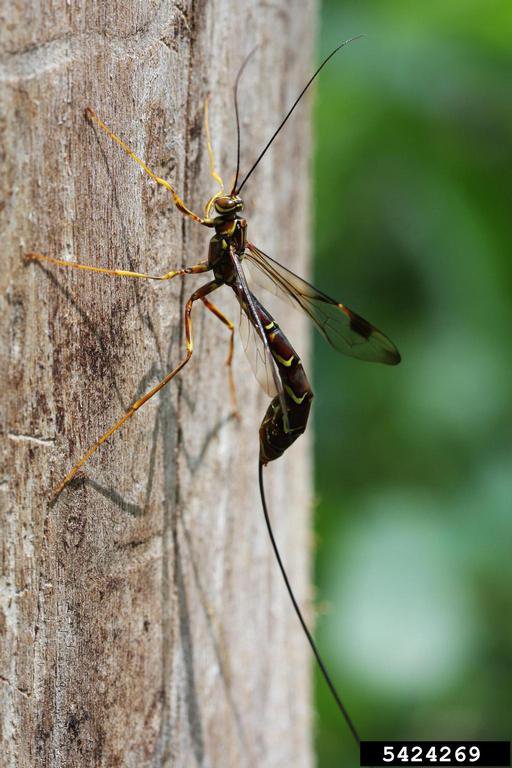
Giant ichneumon wasp (Megarhyssa sp.) Steven Katovich, Bugwood.org
PARASITIC NEMATODES
Steinernematidae and Heterorhabditidae families
Nematodes are microscopic, worm-like organisms that live in the soil. While some species are considered plant pests, others target insects, such as soil-dwelling beetles, fly larvae, thrips pupae, and caterpillars. They are typically purchased and released. It is difficult to measure how prolific native populations are when it comes to pest control, but they can be useful in assisting with the management of certain pests in specific situations. They require moisture to survive, so they tend to be more effective at managing soil-dwelling stages of the target insect than above-ground stages.

Parasitic nematode (Steinernema scapterisci) David Cappaert, Bugwood.org
If you’re still wondering what critters are in your garden, check out Beneficial Insects of Utah or reach out to Utah State University Extension. There are also groups for insect identification on social media platforms such as Facebook.